-
 Bitcoin
Bitcoin $82,014.1421
-1.19% -
 Ethereum
Ethereum $1,803.7058
-1.41% -
 Tether USDt
Tether USDt $1.0001
0.03% -
 XRP
XRP $2.0593
-4.88% -
 BNB
BNB $593.0661
-2.05% -
 Solana
Solana $123.6461
-1.13% -
 USDC
USDC $1.0001
0.00% -
 Dogecoin
Dogecoin $0.1628
-4.07% -
 Cardano
Cardano $0.6393
-5.58% -
 TRON
TRON $0.2331
1.13% -
 Toncoin
Toncoin $3.9040
2.39% -
 Chainlink
Chainlink $13.1480
-4.09% -
 UNUS SED LEO
UNUS SED LEO $9.1039
-5.83% -
 Stellar
Stellar $0.2629
-2.34% -
 Avalanche
Avalanche $18.5339
-3.93% -
 Shiba Inu
Shiba Inu $0.0...01210
-4.08% -
 Sui
Sui $2.2086
-7.00% -
 Hedera
Hedera $0.1579
-7.91% -
 Polkadot
Polkadot $4.0066
-2.36% -
 Litecoin
Litecoin $81.8554
-4.81% -
 MANTRA
MANTRA $6.2317
-2.46% -
 Bitcoin Cash
Bitcoin Cash $297.1179
-3.10% -
 Dai
Dai $1.0000
0.01% -
 Bitget Token
Bitget Token $4.4309
-4.80% -
 Ethena USDe
Ethena USDe $0.9999
0.00% -
 Pi
Pi $0.6964
-9.25% -
 Hyperliquid
Hyperliquid $12.7116
1.48% -
 Monero
Monero $215.2306
-0.46% -
 Uniswap
Uniswap $5.8415
-2.23% -
 Aptos
Aptos $5.1747
-2.52%
How to manage DOT staking addresses on Ledger Live?
Ledger Live facilitates DOT staking by connecting your Ledger device to a validator, but it's crucial to choose a reliable validator to mitigate risks like slashing.
Mar 29, 2025 at 02:14 am
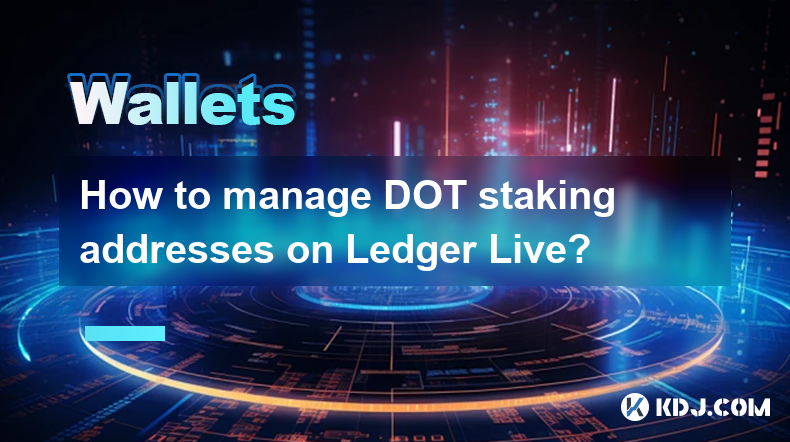
Understanding DOT Staking and Ledger Live Integration
Polkadot (DOT) staking allows users to lock up their DOT tokens to secure the network and earn rewards. Ledger Live, a user-friendly interface for managing Ledger hardware wallets, offers a convenient way to interact with your DOT holdings, including staking. However, it's crucial to understand that Ledger Live itself doesn't directly handle staking; it acts as an intermediary, connecting your Ledger device to a chosen validator. This means security relies on both your Ledger device and the chosen validator.
Choosing a Validator for Your DOT Staking
Selecting a reliable validator is paramount. A trustworthy validator will consistently maintain the network and distribute rewards fairly. Research is key. Look for validators with a proven track record, high uptime, and transparent communication. Consider factors like commission rates, which directly impact your rewards. Never blindly trust a validator's claims; independently verify their reputation. Multiple resources exist online to help you assess validator performance.
Setting up DOT Staking on Ledger Live: A Step-by-Step Guide
Before beginning, ensure your Ledger device is updated to the latest firmware and that Ledger Live is also up-to-date. This is crucial for security and compatibility.
Connect your Ledger device: Plug your Ledger device into your computer and open Ledger Live. Unlock your device and ensure the Polkadot application is installed and open on your Ledger.
Navigate to the Polkadot application: In Ledger Live, find your Polkadot account. You should see your DOT balance displayed.
Select your staking options: Ledger Live will guide you through the staking process. You'll need to choose a validator from the list provided. Carefully review the validator's details before proceeding.
Nominate your validator: After selecting your validator, you'll need to nominate them. This action essentially locks your DOT tokens to support this validator.
Confirm the transaction: Ledger Live will display a transaction summary. Carefully review the details before confirming the transaction on your Ledger device.
Monitor your rewards: Once your DOT is staked, you can monitor your accumulated rewards within Ledger Live. The frequency of reward payouts varies depending on the validator and network activity.
Understanding the Risks Involved in DOT Staking
While DOT staking offers potential rewards, it's essential to acknowledge the inherent risks. Your staked DOT tokens are locked for a period, and you may lose some or all of your rewards if your chosen validator underperforms or is slashed. Slashes occur when validators misbehave and can result in a portion of their staked DOT being burned. Choosing a reputable validator significantly mitigates this risk but doesn't eliminate it entirely.
Managing Your Staking Addresses within Ledger Live
Ledger Live provides a clear overview of your staked DOT. You can view your nominated validator, the amount of staked DOT, and your accumulated rewards. However, remember that you are not directly managing your staking address; you're interacting with the validator through Ledger Live. Any changes, such as unstaking or changing validators, must be done through Ledger Live, following the provided instructions.
Understanding the Role of Ledger in DOT Staking Security
Your Ledger device serves as a crucial security layer in the entire process. All transactions are signed on your Ledger device, ensuring that only you have control over your DOT. This significantly reduces the risk of unauthorized access and theft. However, it's still crucial to maintain good security practices, such as using strong passwords and keeping your Ledger device firmware updated.
Troubleshooting Common Issues with DOT Staking on Ledger Live
Sometimes, you might encounter issues during the staking process. These could include connection problems, transaction failures, or difficulties understanding the interface. Ledger's support website and community forums are valuable resources for troubleshooting. Always refer to official documentation before attempting any troubleshooting steps. Avoid using unofficial tools or guides, as these could compromise your security.
Frequently Asked Questions
Q: Can I stake my DOT directly from my Ledger device without Ledger Live?
A: No, Ledger Live acts as an intermediary to interact with the Polkadot network for staking. You cannot stake directly from the device itself.
Q: What happens if my chosen validator is slashed?
A: If your chosen validator is slashed, a portion of your staked DOT may be lost. The amount lost depends on the severity of the infraction. Choosing a reputable validator minimizes this risk.
Q: How long does it take to unstake my DOT?
A: Unstaking DOT takes time, typically several days or even weeks, depending on the network's congestion.
Q: Can I change my validator after staking?
A: Yes, you can typically change your validator after a certain period, but this process also takes time and may involve unstaking and restaking.
Q: What are the fees associated with DOT staking?
A: There are transaction fees associated with staking and unstaking, as well as validator commission fees, which are deducted from your rewards.
Q: Is it safe to use Ledger Live for DOT staking?
A: Ledger Live, when used correctly and with a reputable validator, is a relatively safe method for staking DOT. However, remember that inherent risks associated with staking remain.
Q: What should I do if I lose access to my Ledger device?
A: Losing access to your Ledger device means you lose access to your DOT. Always keep your recovery seed phrase secure and in a safe place. Never share it with anyone.
Disclaimer:info@kdj.com
The information provided is not trading advice. kdj.com does not assume any responsibility for any investments made based on the information provided in this article. Cryptocurrencies are highly volatile and it is highly recommended that you invest with caution after thorough research!
If you believe that the content used on this website infringes your copyright, please contact us immediately (info@kdj.com) and we will delete it promptly.
- The Price of the Pi Network (Pi) Coin Has Plunged by Over 70%
- 2025-03-31 19:00:13
- A RARE 50p coin sent collectors into a frenzy after it sold for 300 times its face value.
- 2025-03-31 19:00:13
- Sui (SUI) Token Unlock Scheduled for April 1, 2025
- 2025-03-31 18:55:12
- The price of Shiba Inu could surge significantly if SHIB equals or surpasses the market capitalization of Cardano.
- 2025-03-31 18:55:12
- SUI Token Unlock Event Could Impact Its Price Movement
- 2025-03-31 18:50:12
- Dormant Bitcoin Wallet Awakens After Nearly a Decade, Sending Ripples Through the Market
- 2025-03-31 18:50:12
Related knowledge
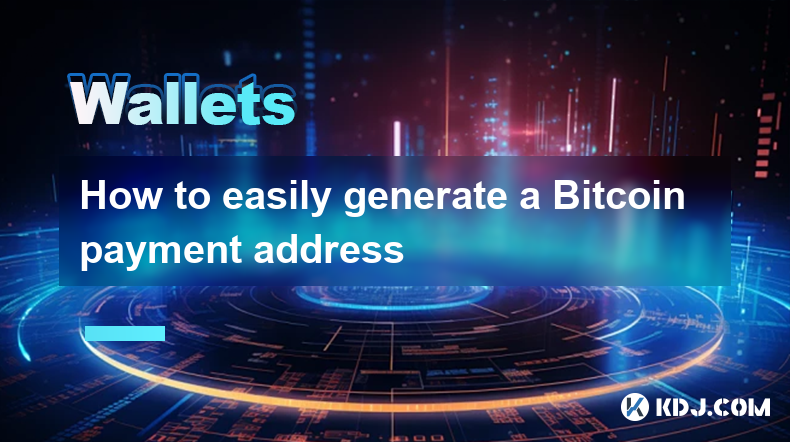
How to easily generate a Bitcoin payment address
Mar 29,2025 at 10:49am
Generating a Bitcoin payment address might seem daunting, but it's actually quite straightforward. This process is crucial for receiving Bitcoin, as each transaction requires a unique address. Understanding how this works is fundamental to using Bitcoin effectively. This guide will walk you through the simple steps, regardless of your technical experti...
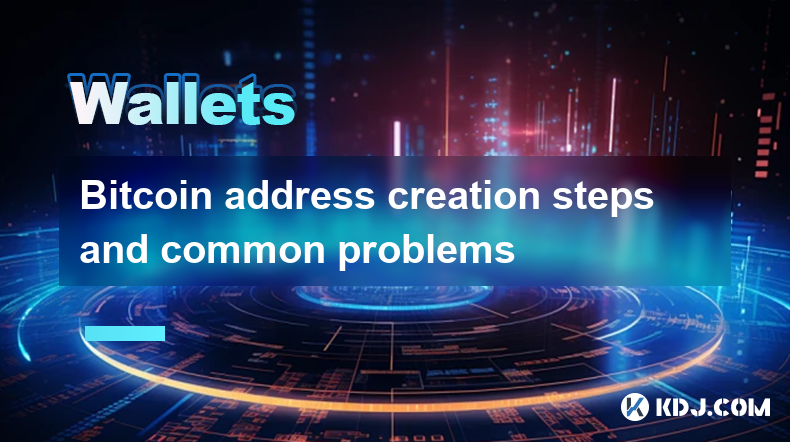
Bitcoin address creation steps and common problems
Mar 30,2025 at 06:07am
Understanding Bitcoin AddressesA Bitcoin address is a unique identifier, similar to a bank account number, used to receive Bitcoin. It's a string of alphanumeric characters generated from a public key, derived from your private key. Understanding the distinction between public and private keys is crucial for Bitcoin security. Your private key should be...
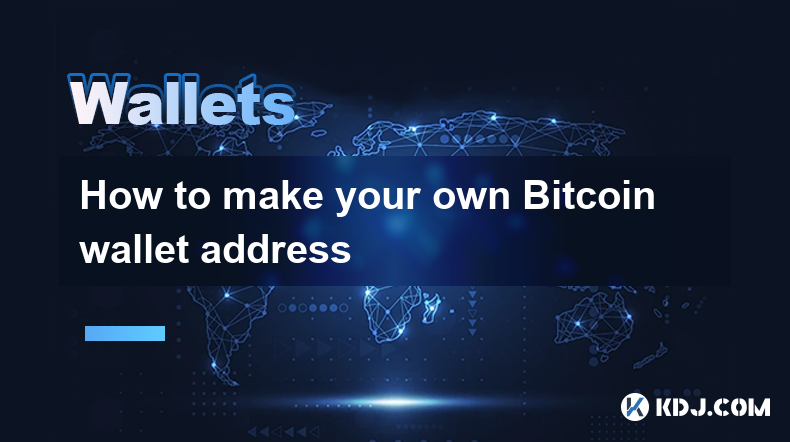
How to make your own Bitcoin wallet address
Mar 29,2025 at 08:42pm
Creating your own Bitcoin wallet address is crucial for securing and managing your Bitcoin holdings. It allows you to independently receive and send Bitcoin without relying on third-party services. This process involves understanding the different types of wallets and choosing the one that best suits your needs and technical expertise. Incorrectly gene...
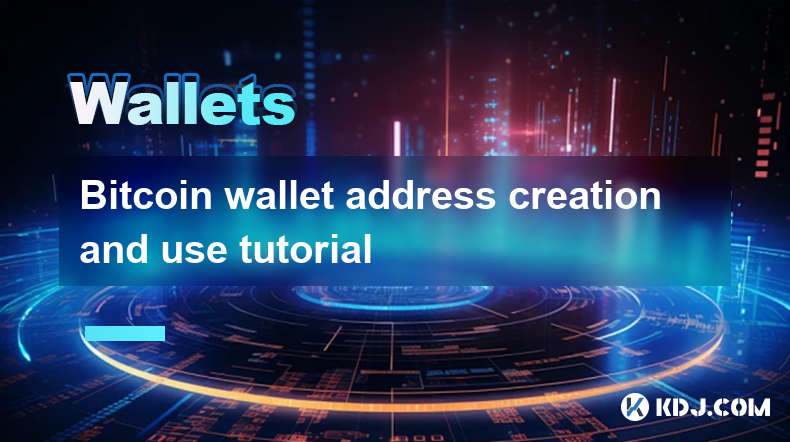
Bitcoin wallet address creation and use tutorial
Mar 29,2025 at 10:14pm
Understanding Bitcoin Wallet AddressesA Bitcoin wallet doesn't store Bitcoin in the way a traditional bank account does. Instead, it stores private keys, which are cryptographic secrets allowing you to access and spend your Bitcoin. Your Bitcoin address, on the other hand, is a public identifier, like an email address, that others can use to send you B...

Bitcoin address generation and secure storage guide
Mar 30,2025 at 08:07am
Understanding Bitcoin AddressesA Bitcoin address is essentially your public key, a string of alphanumeric characters used to receive Bitcoin. It's analogous to your bank account number. Unlike your private key, which is crucial for spending your Bitcoin, your address can be shared publicly without compromising your funds. Generating a new address is sim...
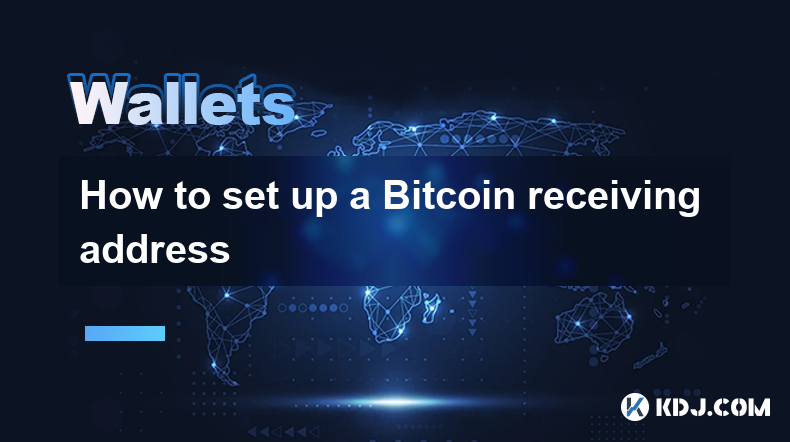
How to set up a Bitcoin receiving address
Mar 30,2025 at 06:14pm
Understanding Bitcoin Receiving AddressesA Bitcoin receiving address is essentially your unique identifier on the Bitcoin network. It's a string of alphanumeric characters that allows others to send Bitcoin to you. Think of it like your bank account number, but specifically for Bitcoin. You need a receiving address to receive Bitcoin. Crucially, you ca...

How to easily generate a Bitcoin payment address
Mar 29,2025 at 10:49am
Generating a Bitcoin payment address might seem daunting, but it's actually quite straightforward. This process is crucial for receiving Bitcoin, as each transaction requires a unique address. Understanding how this works is fundamental to using Bitcoin effectively. This guide will walk you through the simple steps, regardless of your technical experti...

Bitcoin address creation steps and common problems
Mar 30,2025 at 06:07am
Understanding Bitcoin AddressesA Bitcoin address is a unique identifier, similar to a bank account number, used to receive Bitcoin. It's a string of alphanumeric characters generated from a public key, derived from your private key. Understanding the distinction between public and private keys is crucial for Bitcoin security. Your private key should be...

How to make your own Bitcoin wallet address
Mar 29,2025 at 08:42pm
Creating your own Bitcoin wallet address is crucial for securing and managing your Bitcoin holdings. It allows you to independently receive and send Bitcoin without relying on third-party services. This process involves understanding the different types of wallets and choosing the one that best suits your needs and technical expertise. Incorrectly gene...

Bitcoin wallet address creation and use tutorial
Mar 29,2025 at 10:14pm
Understanding Bitcoin Wallet AddressesA Bitcoin wallet doesn't store Bitcoin in the way a traditional bank account does. Instead, it stores private keys, which are cryptographic secrets allowing you to access and spend your Bitcoin. Your Bitcoin address, on the other hand, is a public identifier, like an email address, that others can use to send you B...

Bitcoin address generation and secure storage guide
Mar 30,2025 at 08:07am
Understanding Bitcoin AddressesA Bitcoin address is essentially your public key, a string of alphanumeric characters used to receive Bitcoin. It's analogous to your bank account number. Unlike your private key, which is crucial for spending your Bitcoin, your address can be shared publicly without compromising your funds. Generating a new address is sim...

How to set up a Bitcoin receiving address
Mar 30,2025 at 06:14pm
Understanding Bitcoin Receiving AddressesA Bitcoin receiving address is essentially your unique identifier on the Bitcoin network. It's a string of alphanumeric characters that allows others to send Bitcoin to you. Think of it like your bank account number, but specifically for Bitcoin. You need a receiving address to receive Bitcoin. Crucially, you ca...
See all articles






















































































